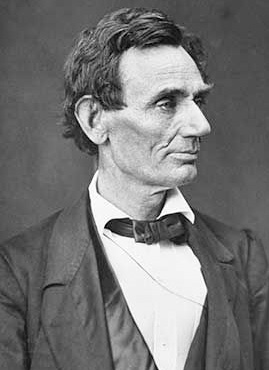Today of course marks the 150th Anniversary of the beginning of the American Civil War. At 4:30 a.m. local time on April 12, 1861, Confederate forces under Gen. P.G.T. Beauregard opened fire on Fort Sumter in Charleston, South Carolina, after having demanded its surrender a couple of days earlier. The Currier and Ives image I've included above is in the collection of the Library of Congress, and shows the artist's impression of the scene. There are no known photos showing the actual attack.
South Carolina had claimed its secession from the Union on December 20, 1860, the first state to do so. Upon secession, it had demanded the forfeiture of Ft. Sumter and all other Federal territory within its borders. Just six days after the secession, U.S. forces under Major Robert Anderson abandoned Ft. Multrie (thought indefensible) for the more secure Ft. Sumter. Repeated calls for its surrender were ignored by the Federal government under both President James Buchanan and Abraham Lincoln.
Abraham Lincoln had made the decision to resupply Ft. Sumter, as well as Ft. Pickens, FL, after weeks of indecision and confusion. The Army commanding general, the ancient Winfield Scott, had advised against the resupply, as had other members of Lincoln's cabinet. Sumter was of little strategic value to the Federal government, but Lincoln had sworn in his inaugural address on March 4 that the government would defend and hold on to its property.
Sumter withstood a barrage of about 34 hours before it was surrendered on April 13, 1861. Part of the surrender agreement permitted the U.S. forces evacuating the fort to fire a 100-gun salute upon departure. During the salute firing, the first death of the Civil War occurred when Private Daniel Hough was killed when the cannon he was loading discharged prematurely. There were no combat-related deaths on either side during the bombardment itself.
The Union tried unsuccessfully over the next four years to recapture Ft. Sumter, including via siege in 1863. It wasn't until February 1865, when Confederate forces evacuated Charleston, that Union forces finally captured Sumter. Major Anderson, now a general, wept as he raised the American flag to its position over the fort.
Other sources tell the story of Ft. Sumter and the beginning of the American Civil War in much greater depth than this article. The National Park Service's official website is a good place to begin. The fort has been restored and is open to the public for visitation most days of the year. You have to pay for a boat ride over to the island the fort is on. The Civil War Trust's Sumter page provides more depth, including maps and a view of the fort in 3D. An excellent resource is Tulane University's "Crisis At Fort Sumter" website.
There are countless books available about Ft. Sumter. A good one was written by David R. Detzer in 2001 and is titled: "Allegiance: Fort Sumter, Charleston and the Beginning of the Civil War." It provides great background about the months and weeks leading up to the opening battle of the Civil War.
To learn more about the decisions which faced Lincoln and his cabinet about whether to resupply the forts or not, you can read David Donald's "Lincoln" or Doris Kearns Goodwin's "Team Of Rivals" books.



No comments:
Post a Comment